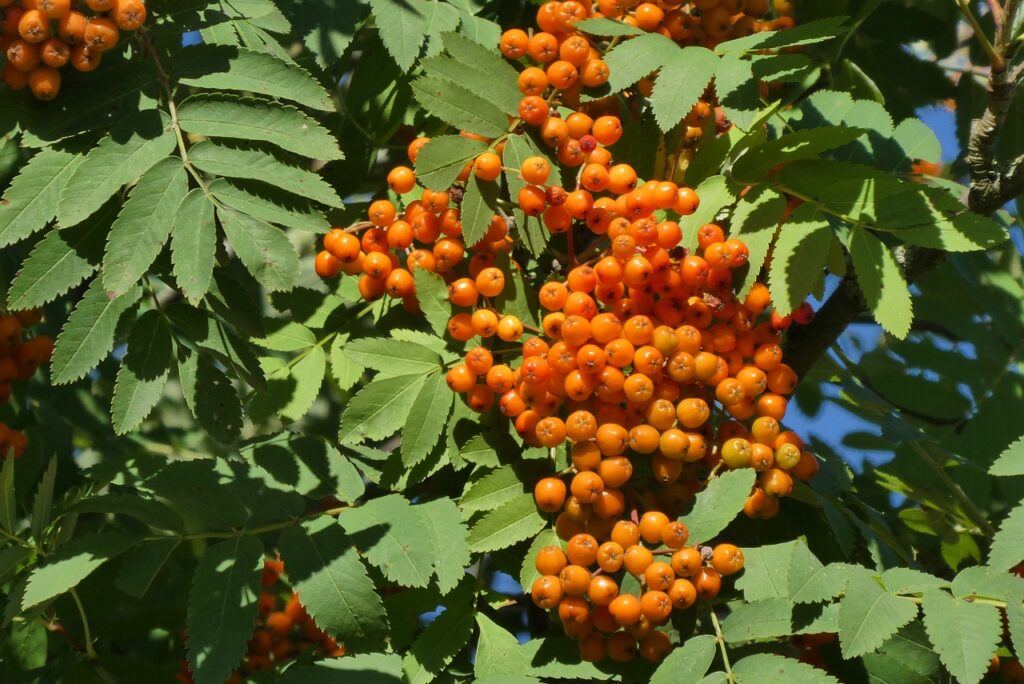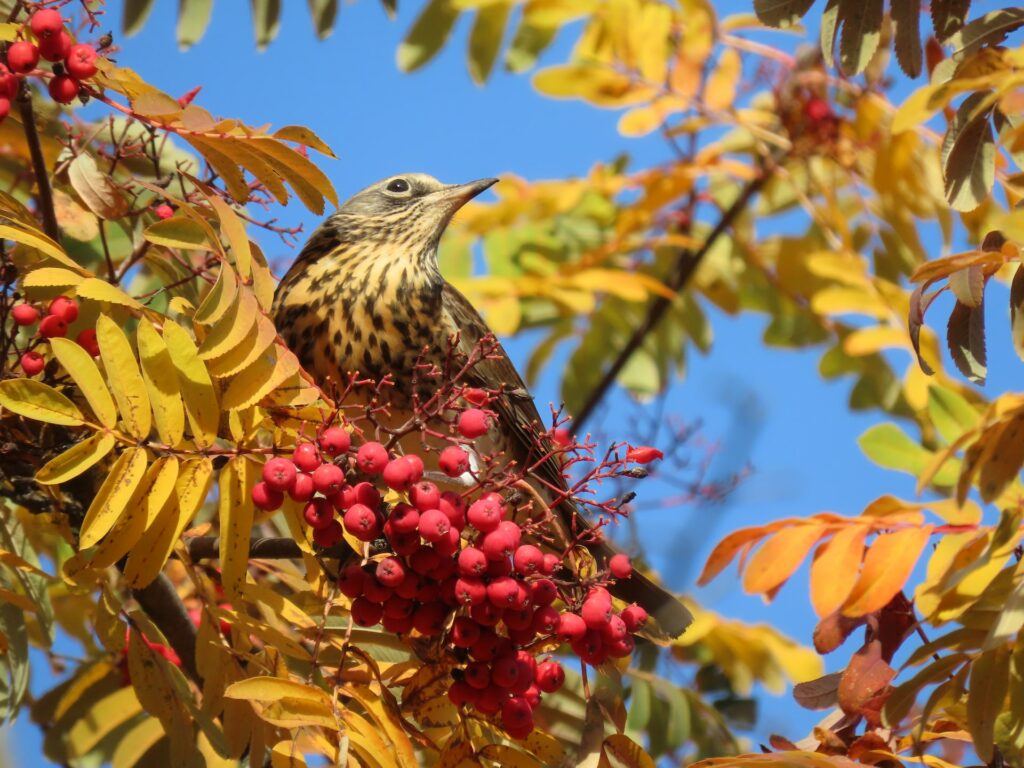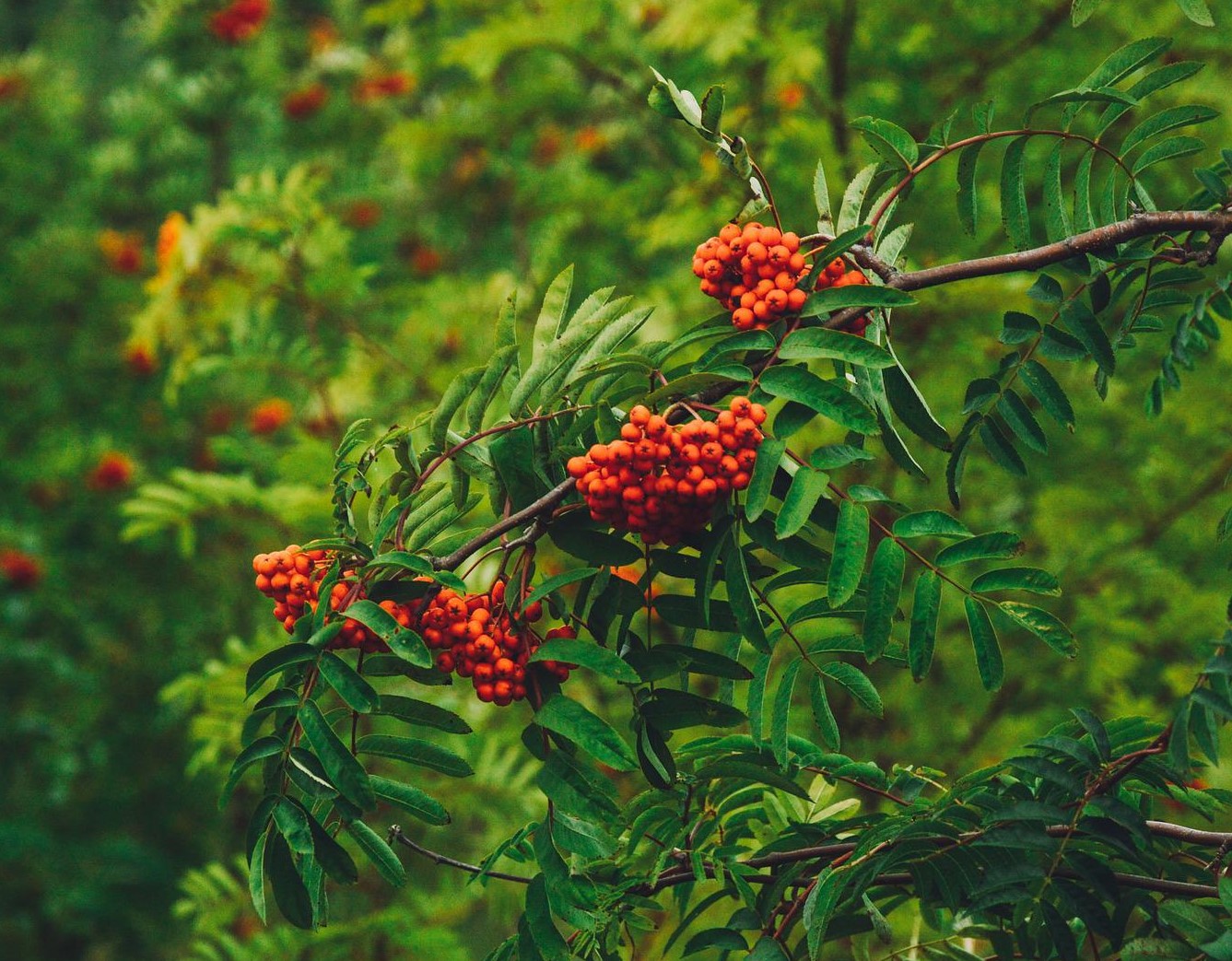The Rowan tree, otherwise known as Mountain Ash, is a stunning ornamental member of the Rosaceae family.
This deciduous tree is common in the UK and other northern hemisphere locations.
In autumn the leaves turn fantastic shades of red, orange and yellow.
At this time the berries (edible to humans but only when cooked) are also resplendent in bright hues of red and orange, even white.
Rowans can be susceptible to adverse conditions and disease however, and without swift action can perish.
So if you have asked the question “Why Is My Rowan Tree Dying?” then read on for answers and solutions.
Bacteria
There are some bacterial infections that can affect the Rowan tree.
Let’s have a look at the two most common.
Fire Blight
Fire Blight is a bacterial infection that can affect some ornamental and fruit trees.
The bacteria live in cankers on the bark and can enter the plant through rain, wind, pruning or via the flowers, particularly in warmer weather.
The affected plant areas look as if they have been burnt, hence the name.
Shoots, then leaves and even full branches turn brown and shrivel as it moves down the tree.
Another sign is a rusty brown staining under the bark, or yellowy white seepage.
How to fix:
- Only prune trees during cold dry weather, ie late winter and early spring, once the last frost has passed.
- Sanitise your tools before, during and after pruning – this will minimise transference.
- If caught early the spread can be halted and the tree saved so monitor your Rowan regularly.
- If you do notice symptoms, cut out affected areas quickly during the trees dormant phase as above.
- Burn the infected plant material immediately.
Crown Gall
This bacterial disease can live in the soil and enter the Rowan tree through exposed wounds in the lower stems, bark or roots.
The bacteria disrupt the natural growth of the tree and forms instead large swollen tumour like masses, or galls.
On an established tree it is not necessarily fatal, but is certainly unsightly. It can also render the tree more susceptible to further infections.
Young trees however can be less resilient and therefore any instances of this infection should be halted before it can spread to more vulnerable plants.
How to fix:
- If your Rowan tree is showing signs of infection and the galls are located on lower stems other than the trunk, then these can be removed and disposed of (not in the compost heap).
- Remove affected branches at least 10cm before the start of the gall.
- Choose a dry cold day in late winter or early spring and sterilise your tools before, during and after pruning.
- If the gall affects the trunk, is extensive and low down, it is possible the tree may not be salvageable and you may need to remove it fully.
- In these cases seek the advice of a professional tree surgeon.

European Mountain Ash Ringspot Associated Virus
This seems to be a fairly new issue affecting Rowan trees in the north of the UK and other parts of Europe.
Infected trees are reported to grow more slowly than usual, and then decline and perish after a few years.
Symptoms can be seen in the leaves which develop pale green patches and mottling like ringed spots.
How to fix:
- As this is a recently identified disease there is limited advice on treatment.
- Much research is currently ongoing and I will update this post when further information becomes available.
- If you do identify this virus in your Rowan tree it is important to report it.
- In the UK please use the following links:
- Britain: https://www.forestresearch.gov.uk/tools-and-resources/fthr/tree-alert/
- Northern Ireland: https://www.treecheck.net/twa-ui/#/public/report
Fungus
Rowans are susceptible to various types of fungus that if left untreated can destroy vulnerable trees.
Here we will look at the three most common.
Cytospora Canker
This is an airborne fungus that can infect the trunk and branches.
It enters the plant via damaged surfaces of bark, either on the trunk or on branches.
The fungus then destroys the bark forming a canker, which is a sunken and discoloured area of dead bark tissue.
This causes necrosis to areas beyond the canker.
There may also be sap seepage.
How to fix:
- Prevention is more effective than treatment as there is no real cure, but you can minimise the spread.
- Try to avoid damaging your Rowan tree bark to minimise chances of infection.
- This could mean stopping your cat scratching the tree, or avoiding strimming in that area.
- Check the tree for any branches rubbing together and remove.
- Prune only in late winter or early spring after the last frost has passed.
- Monitor your tree and if you see signs of Cytospora Canker then remove affected branches at least 10cm before the start of the canker.
- Choose a dry cold day and sterilise your tools before, during and after pruning.
- If the canker affects the trunk, is extensive and low down, it is possible the tree may not be salvageable and you may need to remove it fully.
- In these cases seek the advice of a professional tree surgeon.
Honey Fungus
This fungus spreads underground via infected tree roots and also by the fungus’s own black root like structures called rhizomorphs.
It can affect many types of trees including Privets and Hornbeams.
It is characterised by white fungal growth between the main trunk wood and the bark starting from ground level and travelling up to 1 metre up the trunk.
The base of the trunk then starts to crack, seep and decay.
There is a strong mushroomy smell and this can sometimes be accompanied by honey coloured mushrooms in the autumn.
The fungus attacks the base of the tree and the roots, which eventually causes widespread failure.
Upper parts of the tree start then to diminish as the tree’s health becomes compromised.
How to fix:
- Unfortunately there is no cure so infected plants should be removed and disposed of (not in the compost heap).
- The surrounding area should be tilled to break up the rhizomorphs.
- Some gardeners install plastic liner around infected stumps or areas to obstruct rhizomorph growth.
- The best course of action is prevention through garden hygiene and the promotion of tree health and natural resilience.
- Maintain good airflow around the base of your plants.
- Follow these actions for other affected trees and this may prevent the spread to your Rowan.
Silver Leaf Fungus
This particular type of fungus is airborne and enters the tree through wounds in the bark.
The infection then spreads through the sap.
It can be identified by a silver sheen appearing on the leaves as the layers separate.
This could be caused by frost damage however so check for the other identifying feature which is decaying wood.
Affected branches will show internal darkening.
How to fix:
- Again, prevention is the best way to avoid infection so wherever possible do not allow your Rowan bark to become damaged.
- Check the tree for any branches rubbing together and remove.
- Prune only early in the year during cold dry weather.
- Sterilise your tools before, during and after pruning.
- If you do positively identify Silver Leaf Fungus then any infected parts need to be removed to 5cm before the start of the deterioration.
- Dispose of affected material (not in the compost heap).
- If the decay affects the trunk, is extensive and low down, it is possible the tree may not be salvageable and you may need to remove it fully.
- In these cases seek the advice of a professional tree surgeon.

Drought
Rowan trees can be adversely affected by dry conditions as compared with some other trees their root system is medium to shallow.
Their natural habitat is the cooler Northern hemisphere so although they prefer well draining soil they can struggle in prolonged periods of hot weather with no rainfall.
This can halt the production of buds in the spring as the tree tries to conserve water.
How to fix:
- If your Rowan tree is looking unwell, is drooping or has stopped budding after a spell of hot weather then water it well.
- Make sure that the water is sinking in and not running off. You can form the surrounding soil into a ring to prevent this.
- Keep watering each day until the tree recovers.
- Changes to UK (and worldwide) weather have meant longer periods of hot dry weather.
- This means we as gardeners will need to monitor our plants more closely, and possibly change our practices to suit.
Final Thoughts
Rowan trees really are a beautiful tree in all seasons.
They have delicate green fern like leaves in spring, and attractive white flowers in summer.
The leaves become a stunning display of colours through autumn and winter.
The berries usually last into the winter providing a splash of colour, and are a source of food for many birds.
They are celebrated and attractive trees to have in the garden.
Hopefully by being vigilant and aware of the common causes of Rowan ailments, even beginner gardeners can take swift action to tackle the problem and save the tree.

